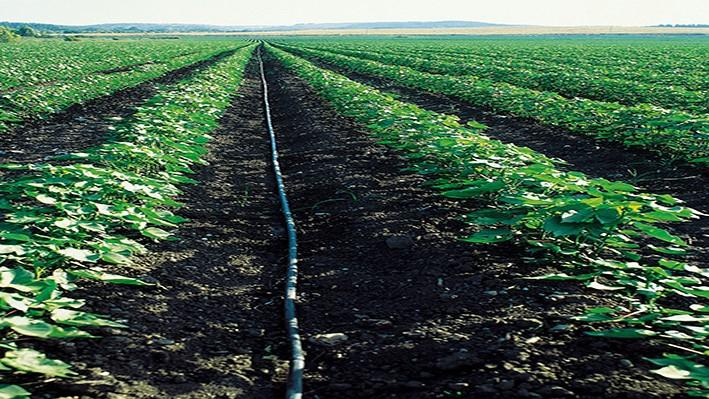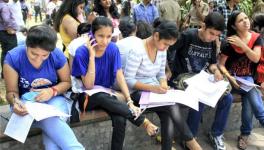What Does the Union Budget '23 Mean for Sustainable Agriculture?

Representational image. | Image Courtesy: pmksy.gov.in
This year marks the completion of the five-year period, by when farmers’ income was supposed to double as per the announcement made in 2016-17. This is also the first budget after the farmer’ movement. In that context, one would like to know the impact of this budget on farmers grappling with challenges posed by rainfed/dryland agriculture practices on an everyday basis and struggling to attain reasonable returns on their produce.
Merging and Revamping Key Schemes
The Rashtriya Krishi Vikas Yojana (RKVY) scheme has been trying to promote comprehensive development in the agriculture sector, taking into account diverse agro-climatic conditions across states and within each state. This scheme was also meant to strengthen the states’ capacity to design locally suited agriculture interventions following a bottom-up planning approach. This flagship scheme has been revamped in the 2022-23 Union Budget; it has subsumed several other schemes in the sector. These are Pradhan Mantri Krishi Sinchai Yojana-Per Drop More Crop (PMKSY-PDMC), Paramparagat Krishi Vikas Yojana (PKVY), National Project on Soil and Health Fertility, Rainfed Area Development and Climate Change (RAD and CC), Sub-Mission on Agriculture Mechanisation including Management of Crop Residue, etc.
Table 1: Revamped Rashtriya Krishi Vikas Yojana (In Rs. crore)
| Schemes | 2018-19 (A) | 2019-20 (A) | 2020-21 (A) | 2021-22 (BE) | 2021-22 (RE) | 2022-23 (BE) |
|---|---|---|---|---|---|---|
| National Project on Soil Health and Fertility | 313.6 | 159.2 | 200.2 | 315 | 100 | .. |
| Pradhan Mantri Krishi Sinchai Yojana-Per Drop More Crop | 2918.4 | 2700 | 2562.2 | 4000 | 2000 | .. |
| Sub-Mission on Agriculture Mechanisation | 1100.8 | 964.8 | 999.7 | 1050 | 850 | .. |
| Promotion of Agricultural Mechanisation for In-situ Management of Crop Residue | 584.3 | 594.2 | 570.7 | 700 | 700 | .. |
| Rainfed Area Development and Climate Change | 216.2 | 186.7 | 128.5 | 180 | 110 | .. |
| Paramparagat Krishi Vikas Yojana | 328.7 | 283.7 | 381.1 | 450 | 100 | .. |
| Rashtriya Krishi Vikas Yojana | 3370.4 | 3085.4 | 2561.3 | 3712.4 | 2000 | .. |
| Revamped Rashtriya Krishi Vikas Yojana | 8832.4 | 7974.3 | 7403.6 | 10407.4 | 5860 | 10433 |
Source: Compiled by CBGA from Union Budget documents, various years.
Note: RKVY has been restructured in 2022-23 (BE) and a number of erstwhile schemes (viz. PMKSY-Per Drop More Crop, PKVY, National Project on Soil and Health Fertility, Rainfed Area Development and Climate Change, Sub-Mission on Agriculture Mechanisation including Management of Crop Residue, etc.) have been merged with it.
This revamping and renaming of schemes have not been accompanied by any stepping up of the Union Budget support. The budgetary allocations for revamped RKVY, the umbrella programme, remain nearly the same as the total budget outlays for its constituent schemes in 2021-22 (BE). Apart from the stagnant budgetary allocations, the primary concern is that only 56% of the budgeted amount is expected to be spent in 2021-22 (as revealed by the reduced level of 2021-22 Revised Estimates).
In the ongoing fiscal year, i.e. 2021-22, only 25% of the Union Budget allocations budgeted for RKVY were released to states until October 31, 2021 (states such as Jharkhand, Telangana, Andhra Pradesh, Karnataka, Gujarat had received no funds in 2021-22 by the said date). One of the reasons cited for this is the delay by some states in contributing their matching shares of funds and formulating District and State Action Plans under the scheme. Behind the slow pace of utilisation of approved budgets for RKVY in 2021-22 lie the implementation hurdles that would require some structural changes (like filling up vacancies at district and block levels) in the agriculture sector apparatus in the states. This, in turn, requires a longer-term public expenditure commitment for the sector by Union as well as the state governments. Under-utilisation of the approved budget for schemes like RKVY (also for other schemes merged with it) is rooted in the absence of longer-term public expenditure commitment for the agriculture sector.
So, the question is whether the revamping/restructuring of RKVY will ease out the causes of low release and utilisation of funds towards it. There is no change in the allocation of funds after giving a makeover to RKVY, even in the accounting sense (from 2021-22 (BE) to 2022-23 (BE)).
Budgetary Response Towards Climate-Resilient Farming and Natural Farming
Around 60% of Indian farmers rely upon rainfed agriculture, covering over 55% of the gross cropped area in the country. Further, it contributes 40% to the total food production. Despite having tremendous potential to contribute a larger share in food production and livelihood, rainfed agriculture continues to be affected by vagaries of monsoon emanating from climate change. Furthermore, 40% of the farms in India are wholly unirrigated, and 85% of them are operated by small and marginal farmers, as per the Agriculture Census 2015-16. Given the importance of rainfed and small-holding agriculture, there is a need to address the challenges and risks involved in such agricultural practices. However, a lack of concerted public investment and policy attention towards rainfed agriculture remains.
PMKSY-PDMC, meant for micro-irrigation and targeted to cover 36 lakh hectares under micro-irrigation in 2020-21 and 2021-22, could achieve only 11.44 hectares. A significant difference had been noted between Budget Estimates and Revised Estimates for the scheme till 2019-20, with the Actual Expenditure exceeding the Revised Estimates in most years. This calls for a pertinent need to increase budgetary allocation for schemes that facilitate long-term infrastructure development of the sectors.
Despite chemical-free farming featuring in recurring budget speeches, the Revised Estimates for the fiscal year 2021-22 for PKVY suggest only Rs 100 crore will be spent in the ongoing fiscal year against the total allocation of Rs 450 crore made in the 2021-22 (BE). PKVY grants subsidies to state governments to form organic farming clusters and provide end-to-end support to organic farmers from production to certification and marketing. Since the scheme has been merged with RKVY in this Union Budget, the budget support provided for the PKVY scheme for 2022-23 is not clear at present (it needs to be examined once the Detailed Demands for Grants of the Union Ministries become available in a few weeks from now). In addition, several schemes, important from smallholders' perspective and meant for sustainable agriculture (such as National Bamboo Mission, National Project on Agroforestry etc.,) seem to have been rolled back in 2022-23 (BE).
This process of restructuring/rationalising schemes relating to climate-resilient agriculture (viz. RAD and CC, National Horticulture Mission, PKVY etc.,) is likely to impact the existing institutional framework for alternative agricultural practices (viz. rainfed/dryland agriculture).
Gurpreet Singh is a Senior Policy Analyst, Centre for Budget and Governance Accountability, New Delhi. Poorvi Kulkarni is a Project Officer, Centre for Budget and Governance Accountability, New Delhi). The views are personal.
Get the latest reports & analysis with people's perspective on Protests, movements & deep analytical videos, discussions of the current affairs in your Telegram app. Subscribe to NewsClick's Telegram channel & get Real-Time updates on stories, as they get published on our website.
























